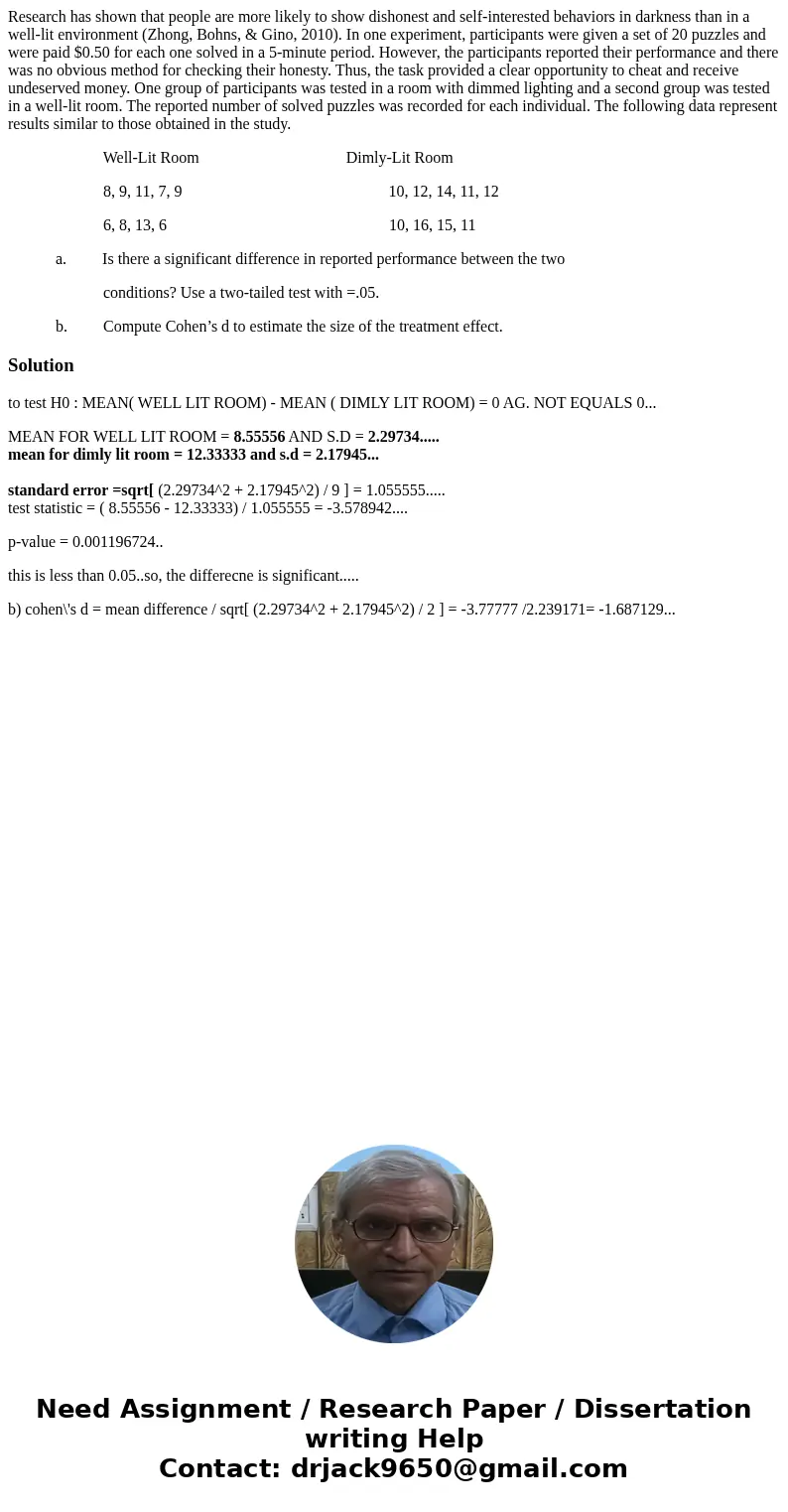Research has shown that people are more likely to show disho
Research has shown that people are more likely to show dishonest and self-interested behaviors in darkness than in a well-lit environment (Zhong, Bohns, & Gino, 2010). In one experiment, participants were given a set of 20 puzzles and were paid $0.50 for each one solved in a 5-minute period. However, the participants reported their performance and there was no obvious method for checking their honesty. Thus, the task provided a clear opportunity to cheat and receive undeserved money. One group of participants was tested in a room with dimmed lighting and a second group was tested in a well-lit room. The reported number of solved puzzles was recorded for each individual. The following data represent results similar to those obtained in the study.
Well-Lit Room Dimly-Lit Room
8, 9, 11, 7, 9 10, 12, 14, 11, 12
6, 8, 13, 6 10, 16, 15, 11
a. Is there a significant difference in reported performance between the two
conditions? Use a two-tailed test with =.05.
b. Compute Cohen’s d to estimate the size of the treatment effect.
Solution
to test H0 : MEAN( WELL LIT ROOM) - MEAN ( DIMLY LIT ROOM) = 0 AG. NOT EQUALS 0...
MEAN FOR WELL LIT ROOM = 8.55556 AND S.D = 2.29734.....
mean for dimly lit room = 12.33333 and s.d = 2.17945...
standard error =sqrt[ (2.29734^2 + 2.17945^2) / 9 ] = 1.055555.....
test statistic = ( 8.55556 - 12.33333) / 1.055555 = -3.578942....
p-value = 0.001196724..
this is less than 0.05..so, the differecne is significant.....
b) cohen\'s d = mean difference / sqrt[ (2.29734^2 + 2.17945^2) / 2 ] = -3.77777 /2.239171= -1.687129...

 Homework Sourse
Homework Sourse